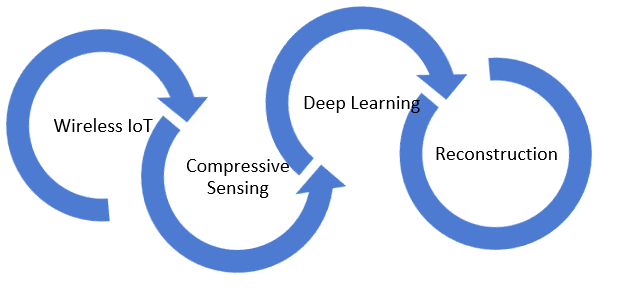Deep compressive sensing and reconstruction algorithm in wireless Internet of Things

Keywords:
Wireless Network, Internet of Things , Lossy Channel, Compressed Sensing, Deep LearningAbstract
The wireless Internet of Things (IoT), in particular its implementation in the field, is gaining growing significance for the communication systems of the future. However, wearable gadgets normally have limited energy consumption so that the battery can last for a longer period of time. On the other hand, it has been demonstrated that compressed sensing (CS), which uses less power than traditional transform-coding-based techniques, is more efficient. Because particular transform domains, such as the discrete cosine transform, reveal specific traits that are closely related with one another in the spatial and temporal data that are collected by wireless Internet of Things sensors. Because the spatial and temporal data collected by a wireless IoT have some closely correlated structures in certain wavelet domains, such as the discrete wavelet transform (DWT) domain, we propose a new low-rank sparse deep signal recovery algorithm for recovering data in the context of compressed sensing (CS). This algorithm is designed to recover data in the context of compressed sensing. For the purpose of implementing and simulating the sparse signal deep compressed sensing (DCS) recovery technique, the simulation was carried out using the MATLAB platform. The model that is described in this work demonstrates an MSE that falls somewhere in the region of -30 to -40 dB, and the comparison analysis arrives at the conclusion that the proposed DCS algorithm is more effective than the work that has already been done.
URN:NBN:sciencein.jist.2023.v11.487
Downloads
Downloads
Published
Issue
Section
URN
License
Copyright (c) 2022 Hemant Rajoriya, Ritesh Sadiwala

This work is licensed under a Creative Commons Attribution-NonCommercial-NoDerivatives 4.0 International License.
Rights and Permission



